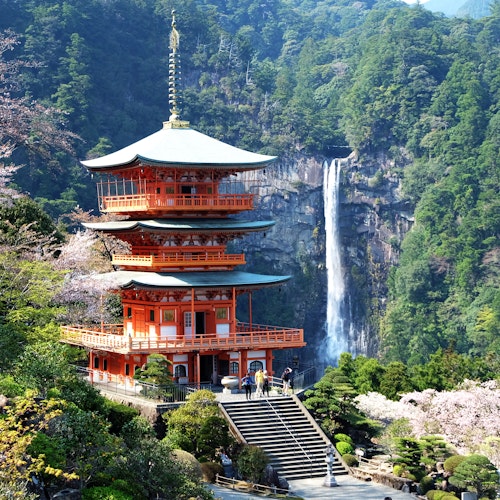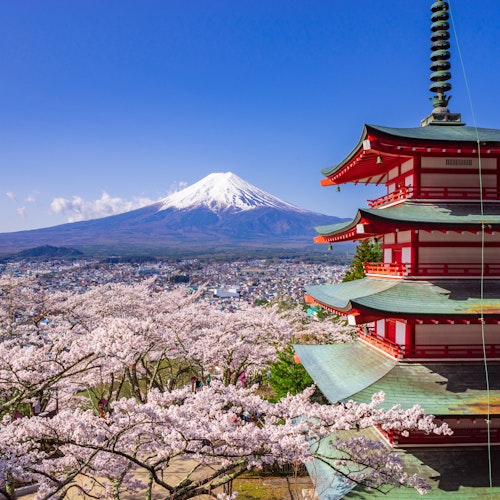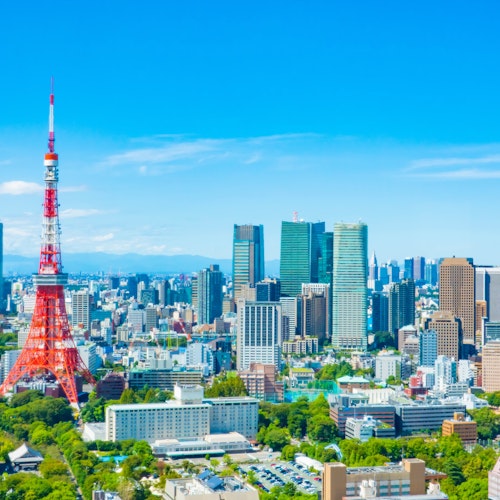
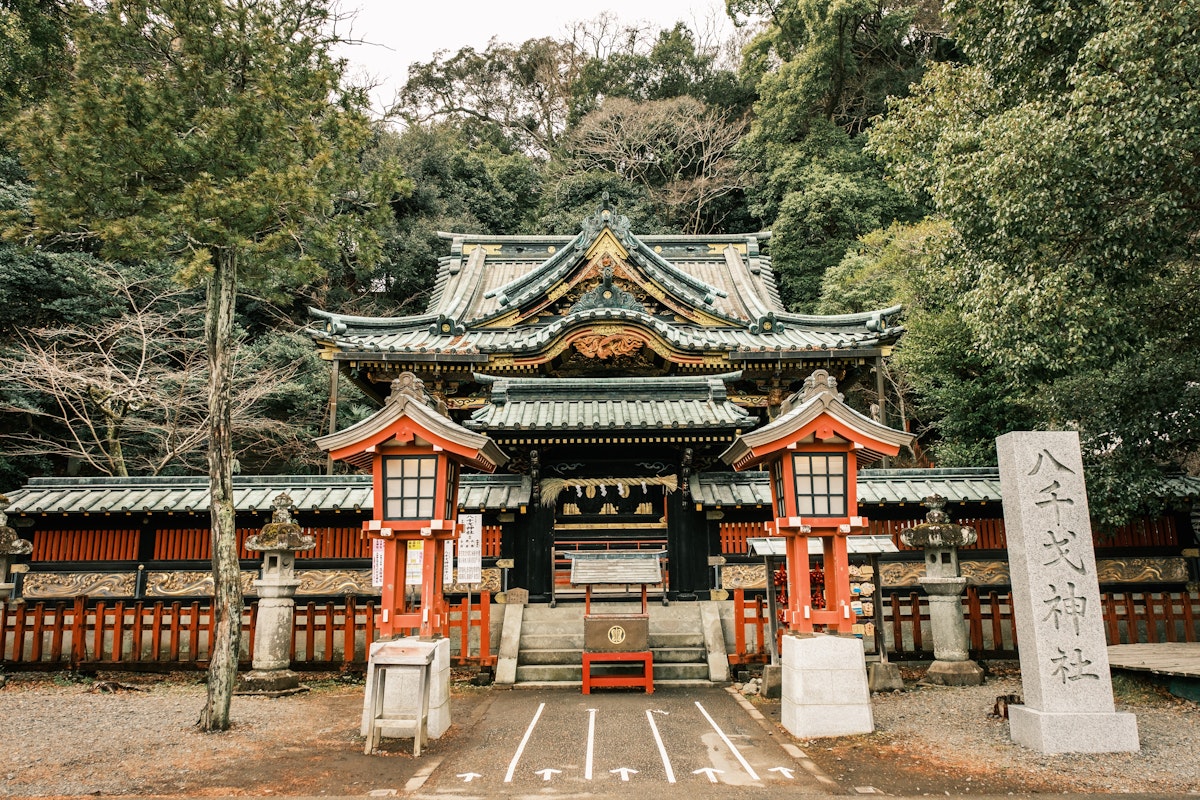
Set in the heart of Shizuoka City, the Shizuoka Sengen Shrine is a sacred site steeped in history and revered for its spiritual significance. With its exquisite architecture, lush surroundings, and deep cultural roots, this shrine complex is a must-see for anyone visiting Japan.
Set against the backdrop of Mount Shizuhata and surrounded by nature, the shrine offers a peaceful respite while showcasing the artistry and devotion of Japan's past. As one of the largest such complexes in the region, Shizuoka Sengen Shrine holds a rich connection to the Tokugawa Shogunate and Suruga Province, making it an ideal spot for history buffs, spiritual seekers, and travelers alike.
Whether you're drawn by the mythical founding deity, the cherry blossoms in full bloom, or the stunning craftsmanship of the main shrines, this cultural treasure should top your itinerary.

The tour includes a visit to the Shizuoka Sengen Shrine.
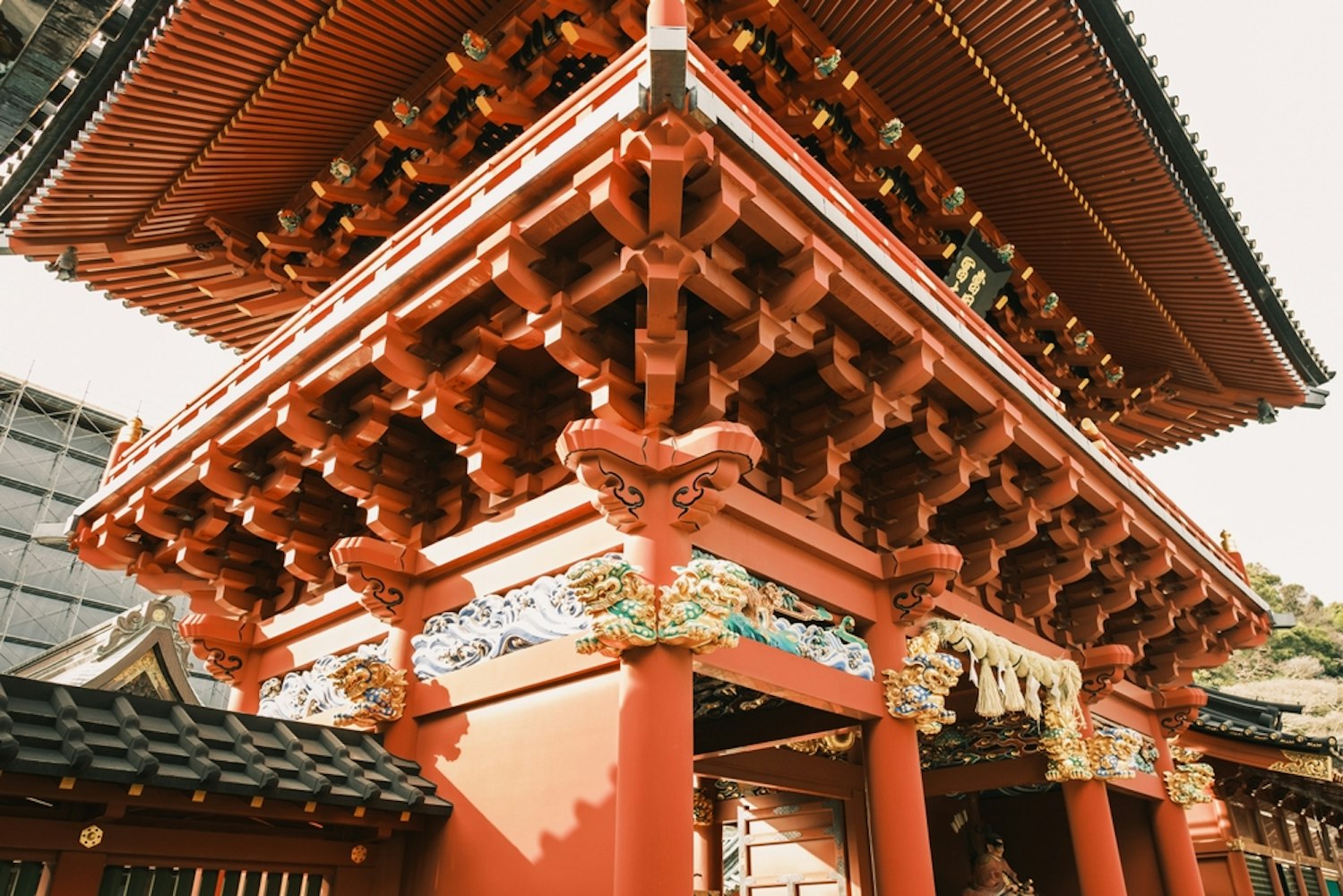
The Shizuoka Sengen Shrine, also known as Shizuoka Sengen Jinja Shrine, is a historical landmark from the Edo period. It is dedicated to the mythical founding deity of Japan and other revered figures, such as Tokugawa Ieyasu, the founder of the Tokugawa Shogunate.
It has been a place of worship and cultural preservation for centuries, with many important cultural properties enshrined within its grounds. During the Edo period, this shrine complex played a central role in Shizuoka's spiritual and political landscape.
Situated in Aoi-ku, Shizuoka, the shrine was an important site where locals and political leaders, including the Tokugawa family, came to pray for protection, prosperity, and success in governance. Over the years, the national government has recognized the Shizuoka Sengen Shrine for its cultural significance, especially as a testament to Japan's Edo-era architectural splendor.
Shizuoka Sengen Jinja overlooks Shizuoka city from the foot of Mt. Shizuhata. It comprises seven shrines: Kanbe, Asama, Otoshimioya, Hayama, Yachihoko, Sukunahikona, and Tamaboko Shrines.
Its location near Sumpu Castle Park, once home to the Tokugawa clan, further emphasizes its historical importance.
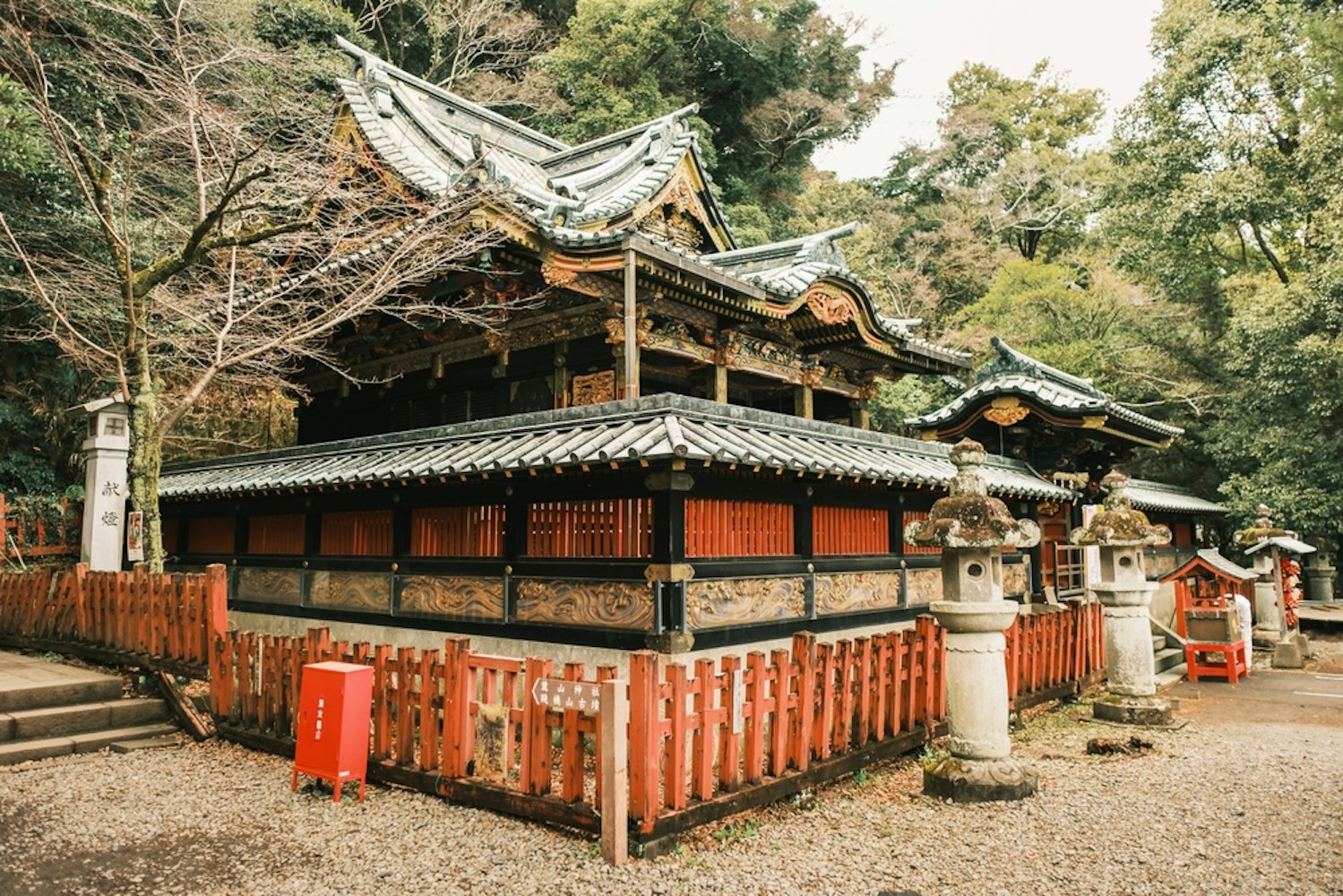
The Shizuoka Sengen Shrine is a collective group of three shrines, making it one of the most notable shrine complexes in Japan. Each shrine has its distinct purpose and history, but together, they form a single religious corporation that continues to serve the spiritual needs of the region.
The Kanbe Shrine (神部神社), also known as Kanbe Jinja, is one of the most historically significant shrines within the Shizuoka Sengen Shrine complex. This shrine is dedicated to Onamuchi-no-Mikoto, a prominent deity who is regarded as the mythical founder of Suruga Province.
Believers visit the shrine seeking blessings for long life, good fortune, and protection from evil. Its grand design, including richly colored woodwork and traditional lacquer finishes, exemplifies the shrine's architectural beauty.
The shrine has stood for over 2,100 years and is a spiritual hub, attracting visitors interested in its religious and historical significance.
Asama Shrine (浅間神社) is one of many Asama shrines in Japan dedicated to the worship of Konohanasakuya-hime, the goddess of Mount Fuji and volcanoes. The shrine was established to honor and appease the spirits of the sacred mountain, which holds immense significance in both natural and spiritual contexts.
As a traditional pilgrimage site, many people visit the shrine to offer prayers to protect from volcanic eruptions and connect with Mount Fuji's powerful symbolism. Over time, these Asama shrines have become integral to Japan's cultural and religious landscape, especially around Mount Fuji, designated a UNESCO World Heritage site in 2013.
The Otoshimioya Shrine (大歳御祖神社), often referred to as the Otoshi Shrine, is dedicated to agricultural deities, particularly Otoshi no Okami, who is associated with abundant harvests and prosperity. Historically, this shrine played a significant role in ensuring the well-being of local agricultural practices by hosting rituals to pray for a successful harvest.
The shrine's deep-rooted connection to farming communities made it a focal point for those seeking divine blessings for crops and land. Additionally, Otoshi no Okami is believed to protect against misfortune, further underscoring the shrine's importance in the region's spiritual life.
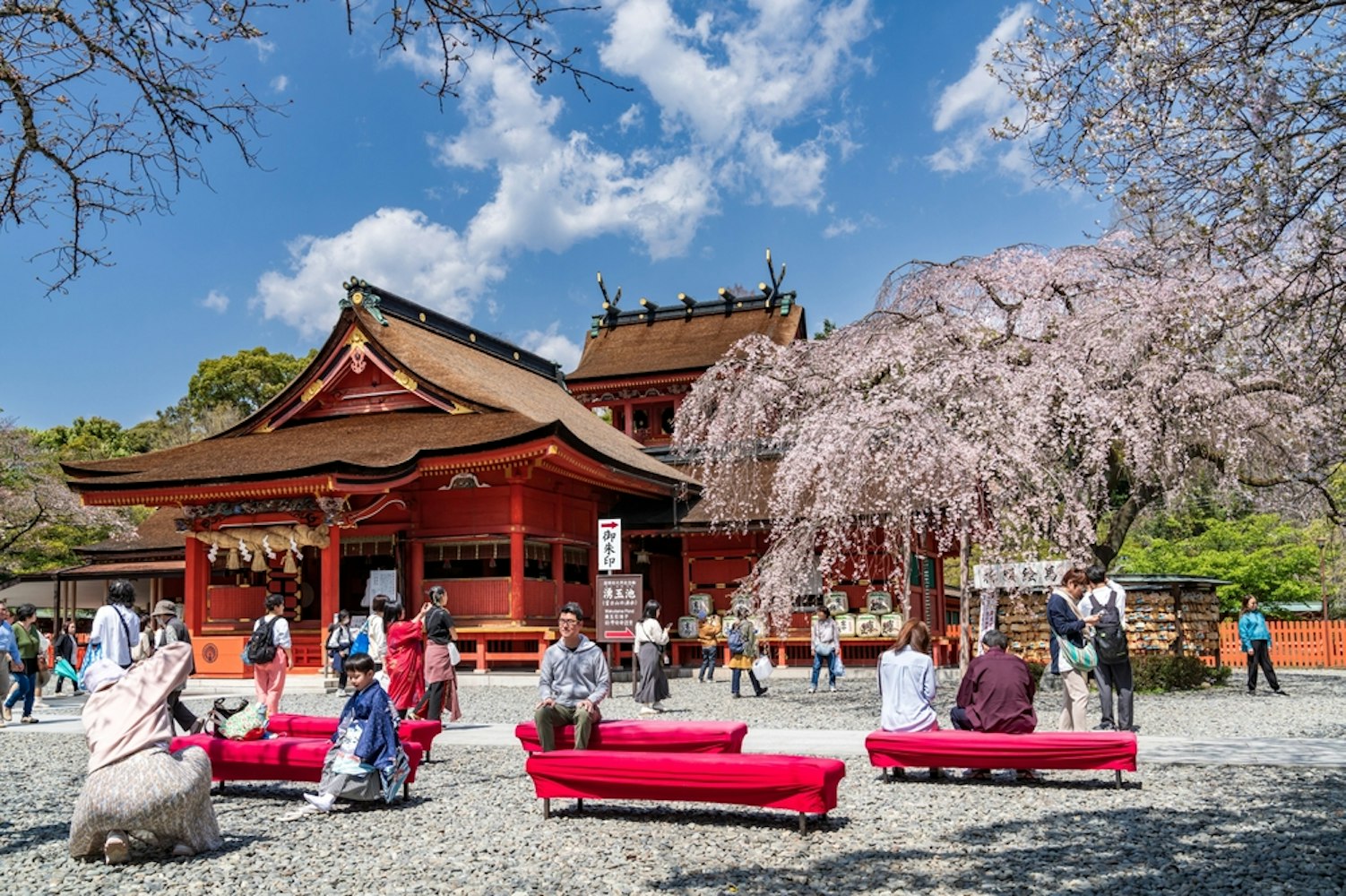
While visiting Shizuoka Sengen Shrine, there are several highlights you absolutely must experience:
Brilliant Main Buildings: The architecture of the main shrines is nothing short of spectacular, with intricately carved woodwork, vibrant colors, and an aura of serenity that instantly captivates visitors.
Important Cultural Properties: The national government has designated numerous relics and structures throughout the shrine grounds as important cultural properties. These provide insight into the Edo period and Japanese religious practices.
Annual Festivals: Remember the shrine's spring festival or main festival, which features traditional dances, vibrant decorations, and participation from the local community, including performances by young boys. These festivals highlight the rich cultural heritage of Shizuoka Prefecture.
Cherry Blossoms in Full Bloom: Visiting in the spring means being treated to stunning views of cherry blossoms in bloom, making the shrine grounds feel even more magical.

Explore Shizuoka's scenic wonders on our stylish Hybrid Bikes.
Shizuoka Sengen Shrine is conveniently located in Aoi-ku, Shizuoka City, making it easily accessible for visitors. The shrine's central location near JR Shizuoka Station ensures that it is well-connected through Shizuoka transportation.
Visitors can enjoy a peaceful visit while close to the vibrant city center. The shrine is open daily from early morning to late afternoon, though hours may vary during festivals.
Entry to the shrine grounds is free, but donations are encouraged, especially if you wish to participate in a prayer ritual. Visitors are also welcome to attend the various festivals held throughout the year, which offer a deeper glimpse into the region's traditional practices.
Getting to Shizuoka Sengen Shrine is relatively straightforward, whether you're coming from within the city or traveling from other parts of Japan:
From JR Shizuoka Station: The shrine is just a 15-minute walk from JR Shizuoka Station. This scenic stroll will take you through Aoi-ku, one of Shizuoka's most charming neighborhoods.
By Bus: For those preferring public transportation, buses run frequently from JR Shizuoka Station to the shrine, making it a convenient option for travelers.
By Car: If you're driving, parking is available nearby. However, early arrival is advisable during the busy spring festival or main festival as parking spaces can fill quickly.
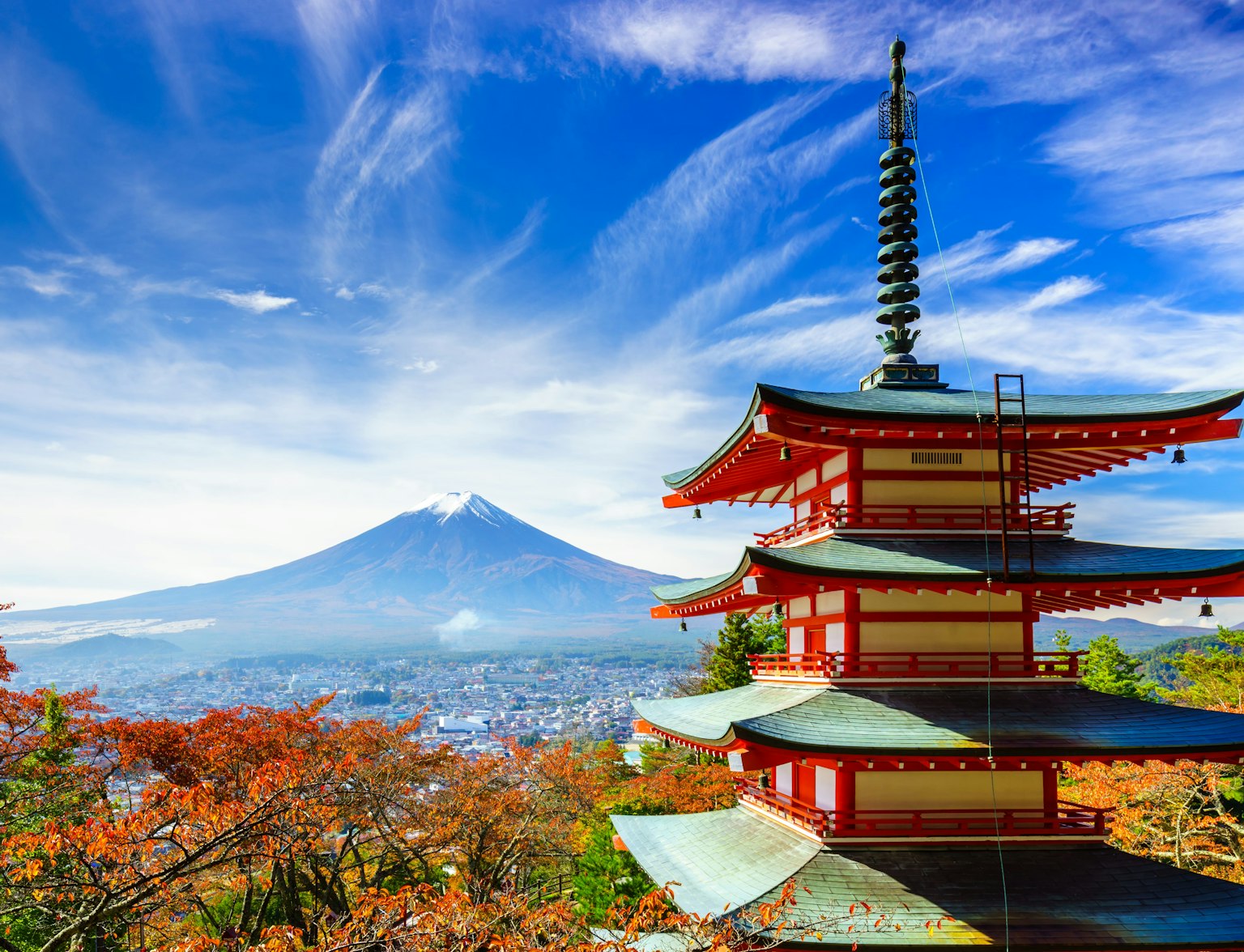
Discover Japan without limits with our all-access JR Pass!
Visiting Shizuoka Sengen Shrine is a journey through time, faith, and beauty. From its historical roots in the Edo period to the stunning craftsmanship and essential cultural properties throughout the shrine complex, it offers a unique experience for all who visit.
Whether you're captivated by its serene atmosphere, Tokugawa Ieyasu's legacy, or the vibrant festivals, Shizuoka Sengen Shrine is a must-see sacred site in Shizuoka Prefecture. Plan your visit to coincide with the cherry blossoms or one of the shrine's annual events, and you'll indeed walk away with lasting memories of this iconic destination.

